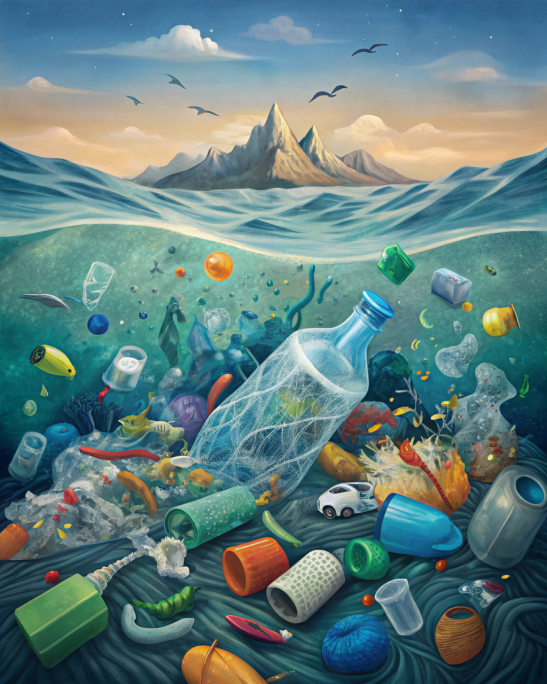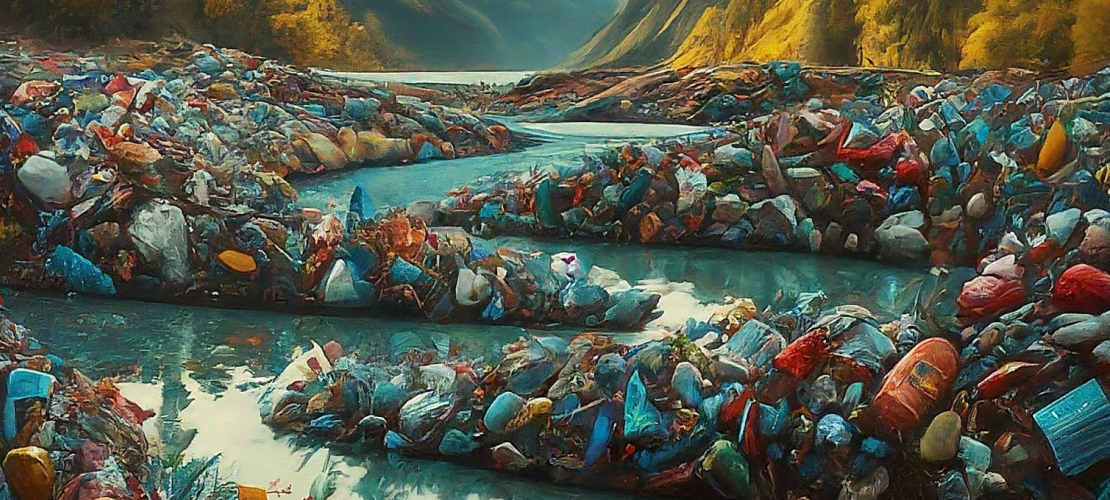Each year, millions of tons of plastic waste end up in our oceans, rivers, and
landscapes,
creating a ubiquitous presence that spans from the deepest ocean trenches to the highest
mountain peaks. This pervasive issue not only compromises the health and biodiversity of
aquatic habitats but also poses significant risks to human populations through the
contamination
of the food chain. Despite increasing awareness and mitigation efforts, the production and
consumption of plastic continue to rise, further exacerbating the pollution problem. In
response
to this growing crisis, scientists and researchers are pioneering innovative solutions and
material
innovations aimed at tackling the root causes of plastic pollution. From plastic-eating
enzymes
and fungi to groundbreaking recycling technologies and sustainable materials, this article
delves
into the scientific approaches that offer hope for significantly reducing plastic waste and
fostering a more sustainable interaction with our environment.
The Scale of Plastic Pollution
The scale of plastic pollution has reached alarming levels globally, signaling a pressing
need for
comprehensive action. Annually, around 350 million tonnes of plastic waste are generated,
with
only a fraction, approximately 0.5% or 1.7 million tonnes, finding its way into the ocean.
However, this seemingly small percentage translates into a significant environmental threat,
especially considering the longevity and harmful effects of plastics in marine ecosystems.
The mismanagement of plastic waste is a critical issue, particularly in middle-income
countries,
where waste management infrastructure is often inadequate. These countries are the primary
contributors to plastic flowing into the ocean, with Asian nations leading in plastic
emissions due
to high levels of mismanaged waste. This situation underscores the necessity of improving
waste
management globally to mitigate plastic pollution effectively.
Despite recycling efforts, only 9% of the world's plastic waste is recycled, leaving a
significant
amount either to be landfilled or mismanaged—risking leakage into natural environments. The
variation in waste management practices across regions highlights the disparity in how
plastic
waste is handled, with some countries relying heavily on landfills and others on
incineration.
Addressing this crisis requires a multifaceted approach, emphasizing the improvement of
waste
management systems, reducing plastic production, and fostering international cooperation.
The
World Economic Forum has called for a global treaty to tackle plastic pollution, stressing
the
urgency of transitioning from a linear plastic lifecycle of "take, make, dispose" to more
sustainable practices.
Scientific Solutions to Plastic Pollution
In the battle against plastic pollution, scientific solutions and material innovations are
emerging
as game-changers, offering promising pathways to a more sustainable future. The innovation
landscape is diverse, ranging from biological processes that degrade plastics to the development
of new materials that can either replace plastics or significantly reduce their environmental
impact.
One of the most groundbreaking scientific solutions is the discovery and development of
plastic-eating enzymes. Identified first in Japan, the enzyme Ideonella Sakaiensis 201-F6 has
shown the ability to break down Polyethylene terephthalate (PET), a common type of plastic, by
consuming it as a food source. Researchers have been working to enhance the efficiency of this
enzyme, achieving a modification that allows it to consume PET 20% faster than its natural rate.
This innovation opens up new possibilities for dealing with PET plastics, which are widely used
and often end up in landfills and oceans.
Another biological approach involves the use of plastic-eating mushrooms, such as Aspergillus
Tubingensis, which has been found to degrade polyurethane. This fungus not only breaks down
plastic but can also transform it into a potentially useful biomaterial. The ability of certain
fungi
to consume plastics introduces an exciting avenue for bioremediation, offering a natural method
to reduce plastic waste.
On the material innovation front, scientists are developing magnetic coils capable of targeting
microplastics in the ocean. These coils, coated in nitrogen and a magnetic metal called
manganese, react with oxygen molecules to attack and break down plastics. This technology
represents a novel way to address the issue of microplastics, which are particularly challenging
to capture and remove from marine environments.
Converting plastic waste into fuel is another innovative solution. Technologies like the
Catalytic
Hydrothermal Reactor (Cat-HTR) are able to transform unrecyclable plastics into liquid fuel. By
breaking down plastics to their component parts, this process not only provides a new use for
waste plastics but also highlights the potential for chemical recycling to play a role in
managing
plastic pollution.
The utilization of plastic waste in constructing roads, such as the PlasticRoad project,
demonstrates an inventive way to repurpose plastic waste. By using recycled plastic to create
durable and sustainable road surfaces, this approach not only reduces the amount of plastic
waste
but also offers a practical application that can benefit communities.
Bioplastics made from seaweed represent another significant area of innovation. Companies are
exploring the conversion of seaweed into biodegradable packaging materials. This not only
provides an alternative to traditional plastics but also leverages seaweed's natural properties
to
create products that have a minimal environmental impact.
These examples highlight the potential of scientific research and innovation to tackle one of
the
most pressing environmental issues of our time. By developing and implementing solutions that
can break down existing plastics, prevent plastic waste, or replace plastics with sustainable
alternatives, we can make significant strides toward reducing plastic pollution and protecting
our
planet for future generations.





